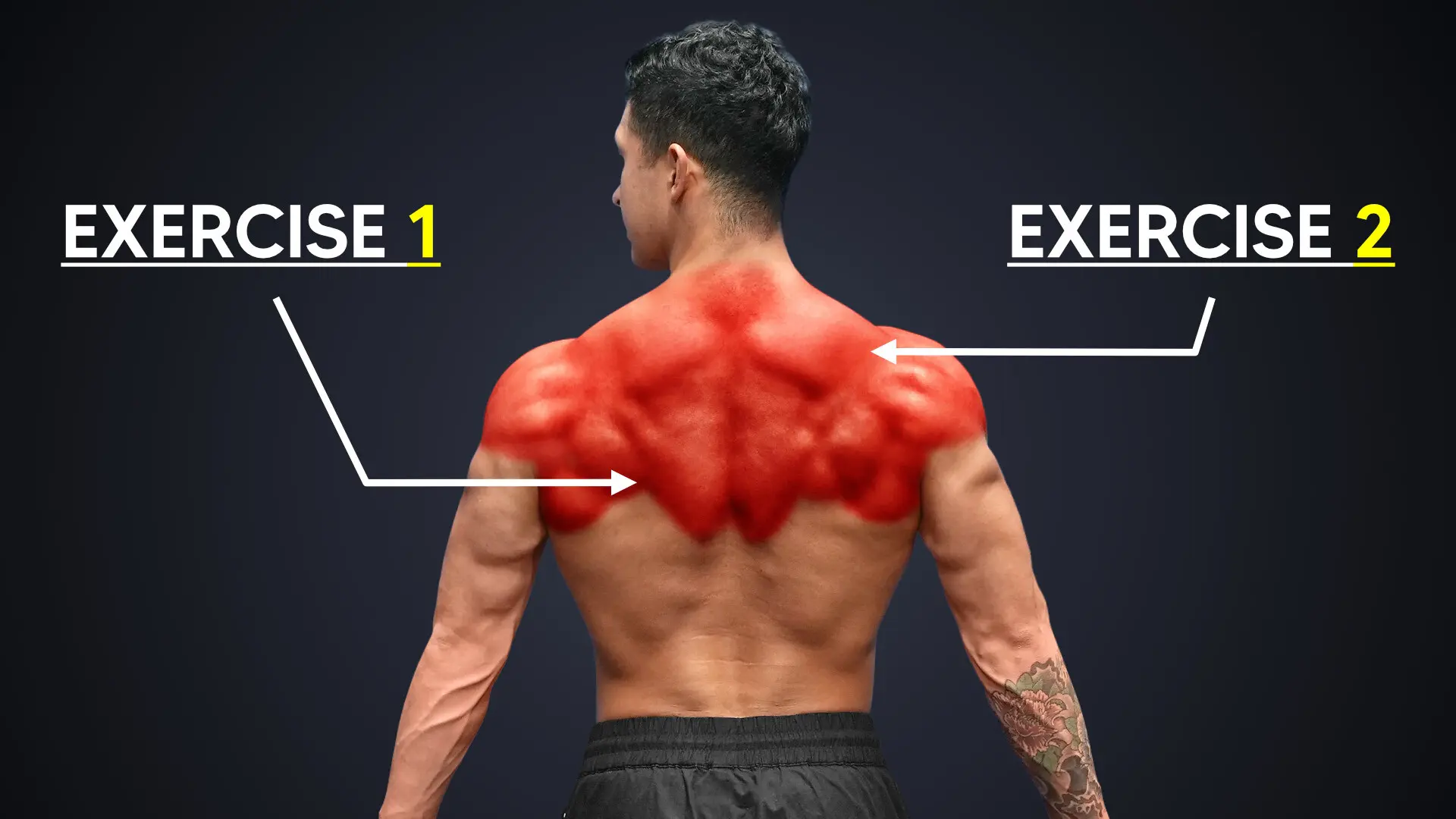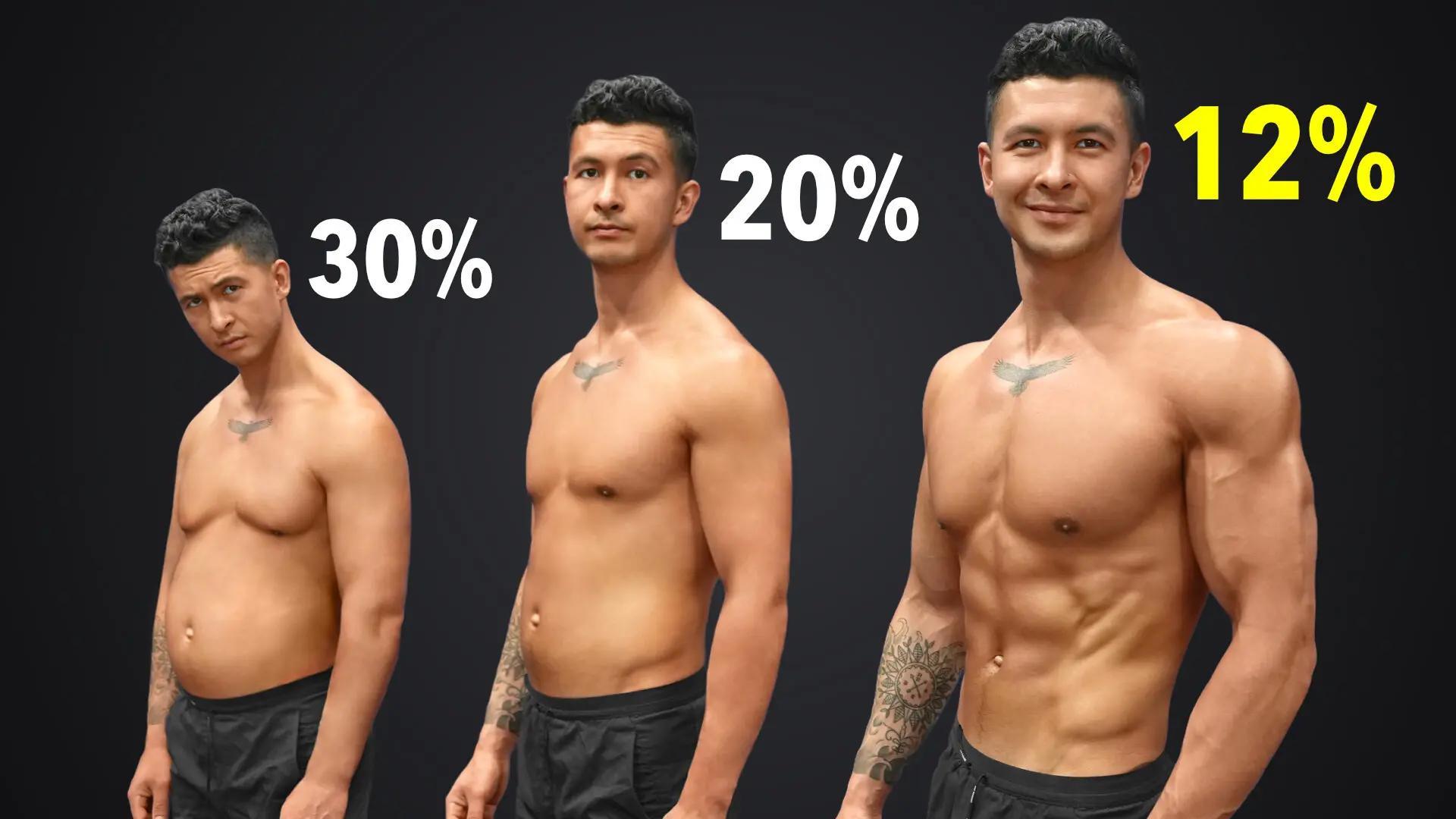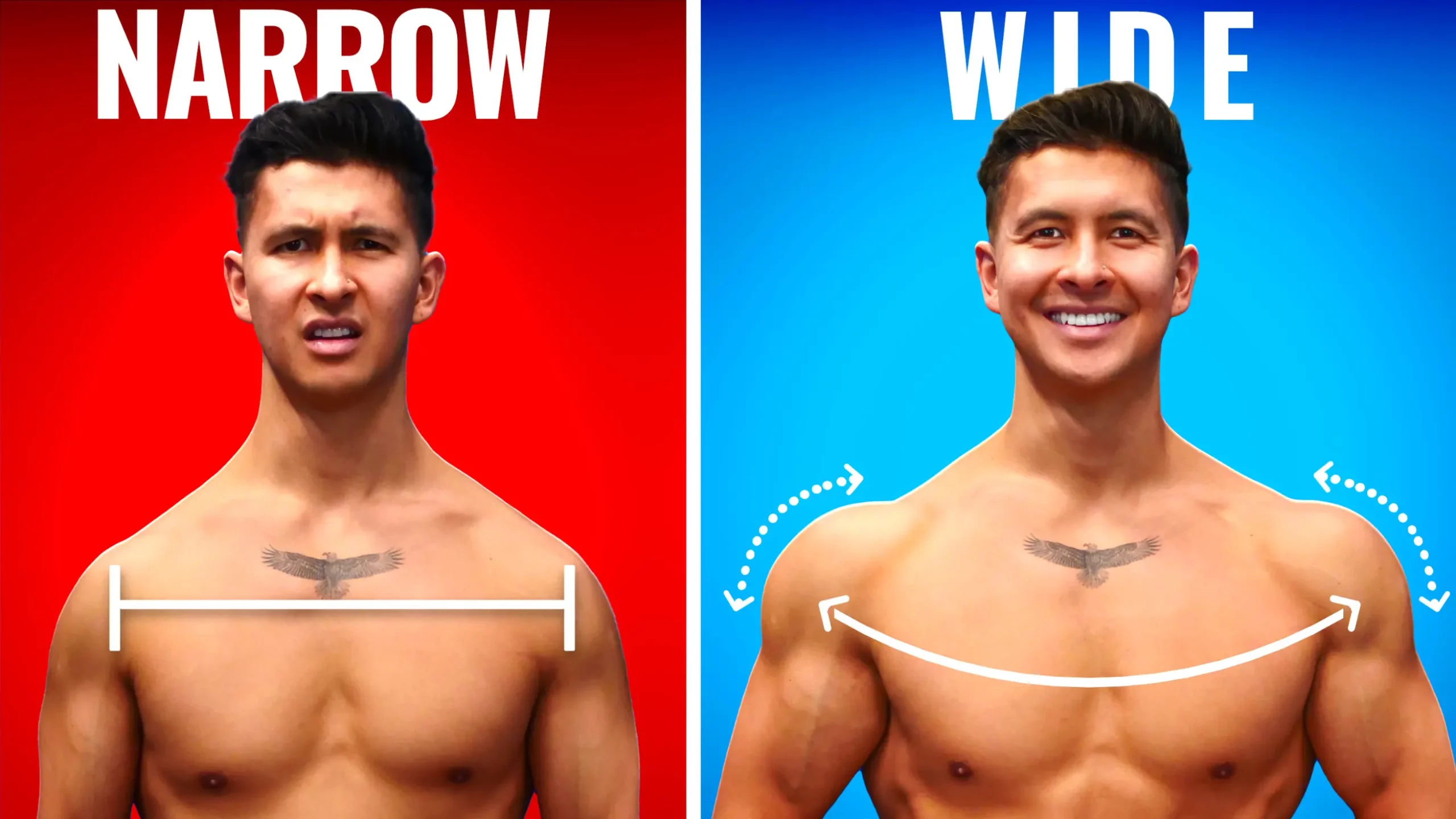
The #1 Delts Workout That Blew Up My Shoulders (3 Exercises)
Today I want to share the #1 delts workout that absolutely blew up my shoulders.
My Filipino genetics blessed me with a 1:1 shoulder-to-waist ratio and narrow clavicles that made me look frail and weak.

But I refused to let my genetics define me.
This past year, my shoulders blew up.
They’re wider, broader, and fuller than they’ve ever been.
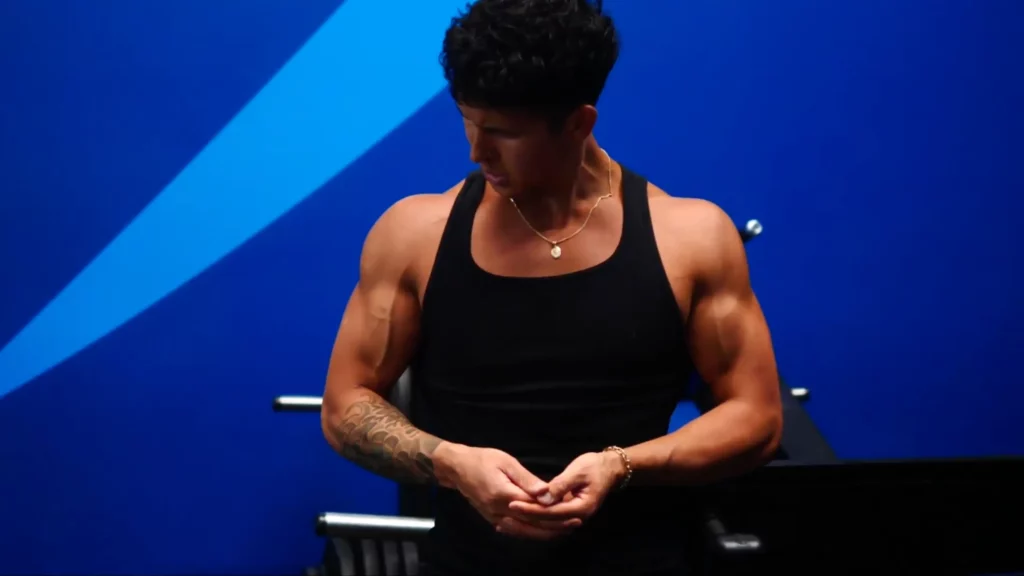
I didn’t use any *ahem* needles, either.
I followed a simple, science-based delts workout that’s worked better than anything I’ve tried in the past.
There are only 3 exercises in this shoulders workout, but proper form is crucial, so pay attention.
Exercise #1: Behind The Body Cable Lateral Raise
First up in our delts workout, the side delts.

This is the part of the shoulders that broadens your frame and is where I put most of my effort.
Now in the past, in my delts workout, I’d always just do your typical dumbbell lateral raises.
But there’s an exciting new area of research called long muscle length training that suggests this may not be ideal for growth.
This research has shown muscles tend to grow better if they’re challenged in the stretched position.
For example, one study published just this year found that preacher curls, which challenge the biceps the most right around here when they’re almost fully stretched, grew the biceps 150% more than incline dumbbell curls which are instead hardest right around here when the biceps aren’t stretched as much.
Similar findings have been shown in the triceps, hamstrings, and quads as well.
So although the shoulders have yet to be tested, it seems probable they’d also benefit from this.
But the thing about dumbbell lateral raises is they’re easiest at the bottom when the delt is fully stretched and hardest at the top when the delt is fully contracted.
The opposite of what we want.
So I chose behind-the-body cable lateral raises for my delts workout to target my side delts instead.
How To Perform The Behind-The-Body Cable Lateral Raises
This is where I stand in front and to the side, so my side delt is now stretched behind me.

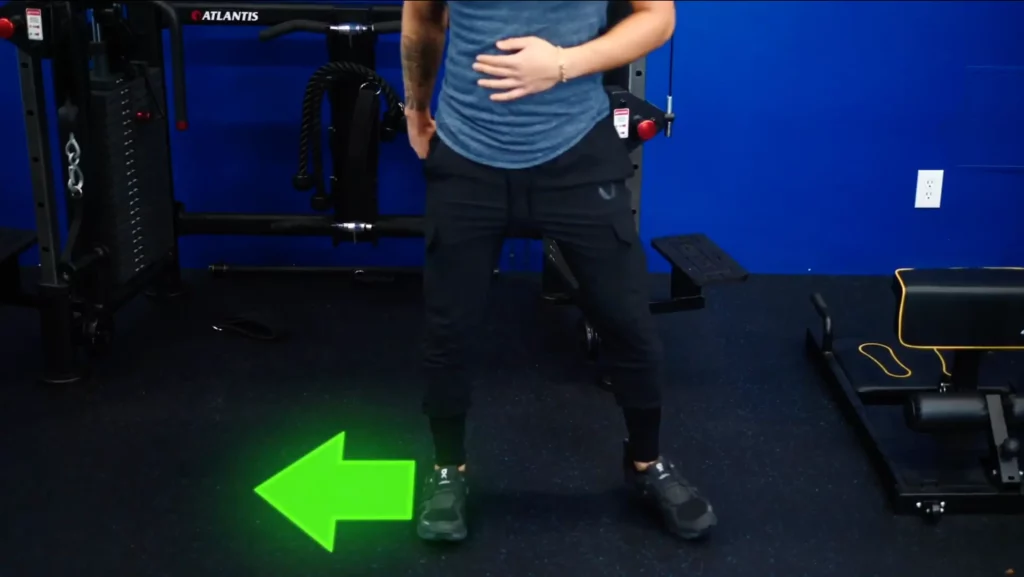
But simply “stretching” your delts isn’t enough.
You need to make sure the cable is at the right height so it challenges your delts the most when it’s stretched.
If the cable’s at the very bottom, the exercise will challenge your delts closer to the end when your delt is fully contracted.
Whereas if you bump it up by 2 or 3 notches, the exercise will now challenge your delts more at the beginning when they’re stretched.
Now if you don’t have access to cables for your delts workout, dumbbell lateral raises are still a great option and are probably complimentary to this exercise.
And you can implement the “stretch” research with them by first doing as many full reps as you can and then finishing off your set with partials at the bottom to work your delts more in that stretched position.
A Crucial Progressive Overload Tip
That said, there is one more progressive overload tip I applied to my side delt training that made all the difference.
It has to do with how much weight I used.
Usually, whenever I’d do lateral raises and tried to increase the weight, my form would get sloppy during my delts workout, and I’d start feeling it all in my traps.
But a recent 2022 study helped provide a solution to this.
One of our Built With Science researchers, Daniel Plotkin, actually ran this study.
I applied the research to my delts workout by sticking to the same weight every week and trying to do just a couple more reps than last time.
I’d start around 10 reps per set, and only once I was able to do at least 15-20 reps per set with good form did I increase the weight. This way, I still made gains by increasing my reps, and then once I did make that jump in weight, I was ready for it.
Exercise #2: 45-Degree Reverse Cable Fly
So the side delts create width, but the rear delts help balance out the shoulder and give it that 3D look.
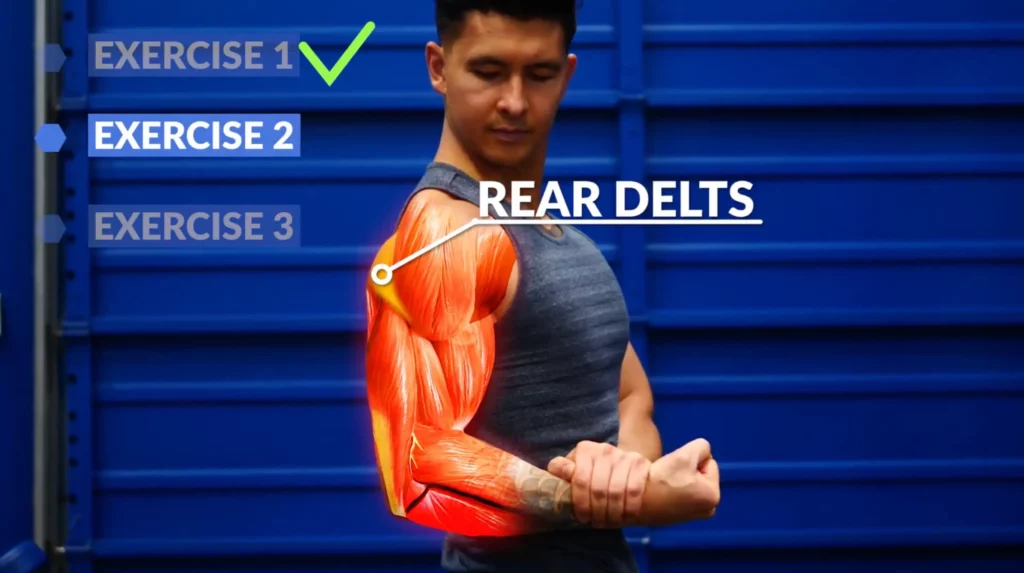
But it’s by far the most underdeveloped part of most people’s shoulders.
And I was no exception.
My rear delts have always been trash.
In my typical delts workout, I’d spam them with dumbbell reverse flyes and the reverse pec deck and couldn’t figure out why they just wouldn’t grow.
Well, here’s why.
We know that muscles are best grown if the arm path of the exercise matches the direction of the muscle’s fibers.
In the case of the rear delts, they run at about a 45-degree angle.
This is why some people can end up building massive rear delts without even trying.
They perform many of their rows with this arm angle and end up growing their rear delts instead of other parts of their back.
But this was never the case for me, so I needed an exercise that isolated my rear delts really well in my delts workout.
What I found the most success with was using this 45-degree arm angle during the reverse cable fly, but with a few steps back from the cable to make it more difficult near the beginning of the exercise when the rear delts are more stretched.
But you could apply this to the reverse pec deck as well.
Move the seat up high and instead of sitting right up against the pad, scoot your butt back and lean your chest into the pad.
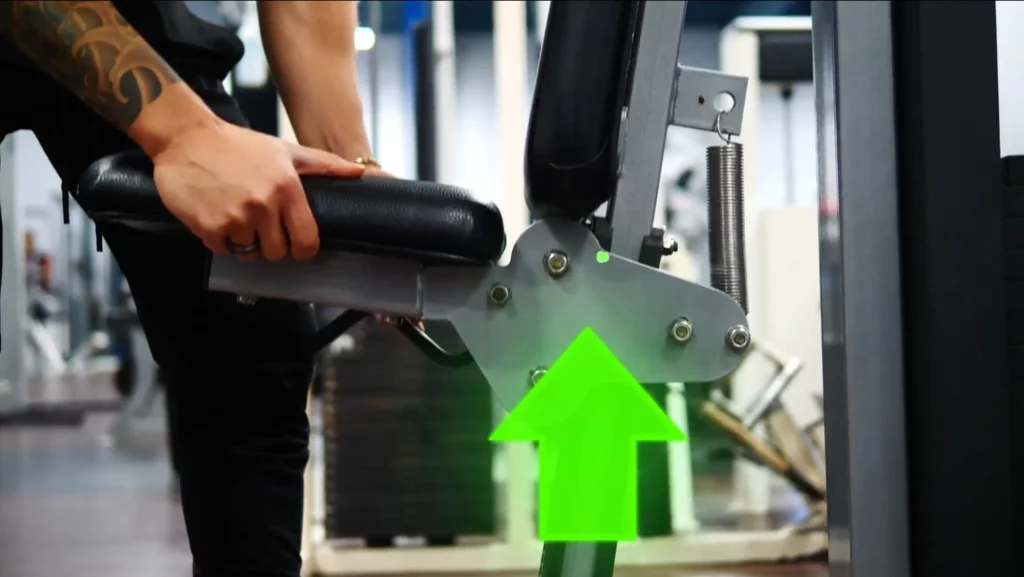

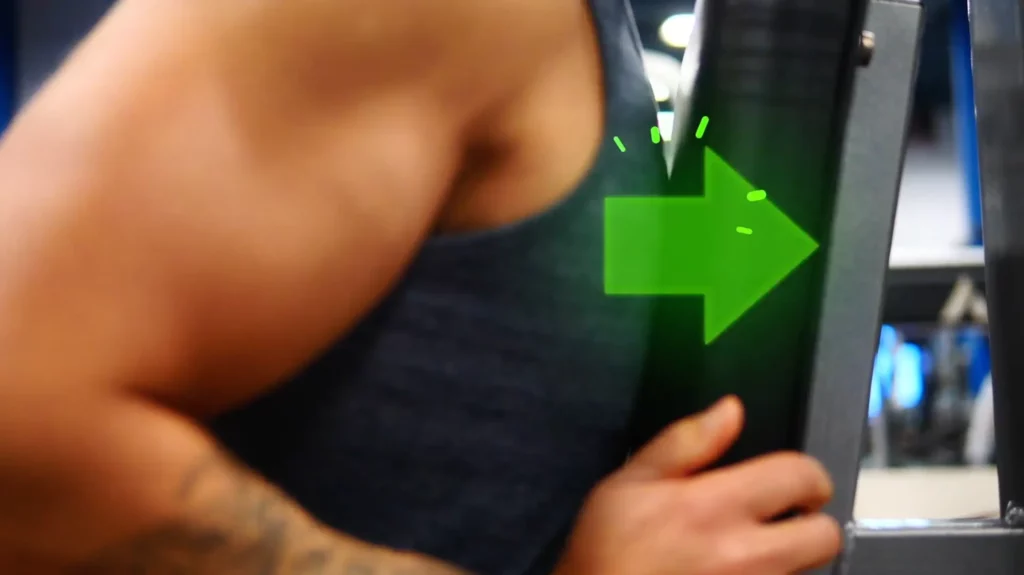
This way, your arm angle will now line up better with rear delts.
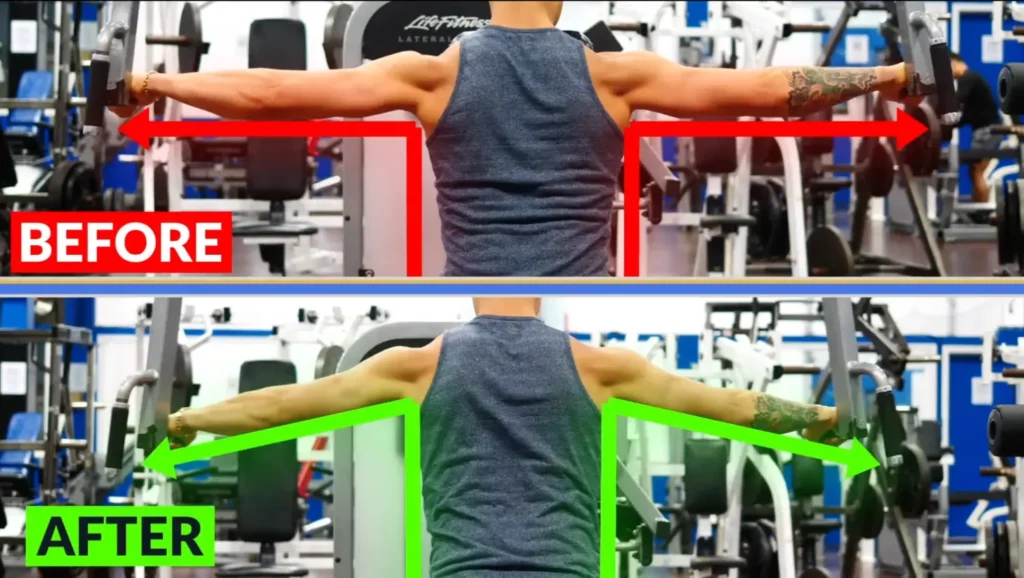
And if you don’t have access to cables or machines for your delts workout, you can do an incline dumbbell row with your arms kept at that 45-degree angle.
In all of these exercises, though, to prevent your mid-back muscles from taking over, don’t squeeze your shoulder blades together.
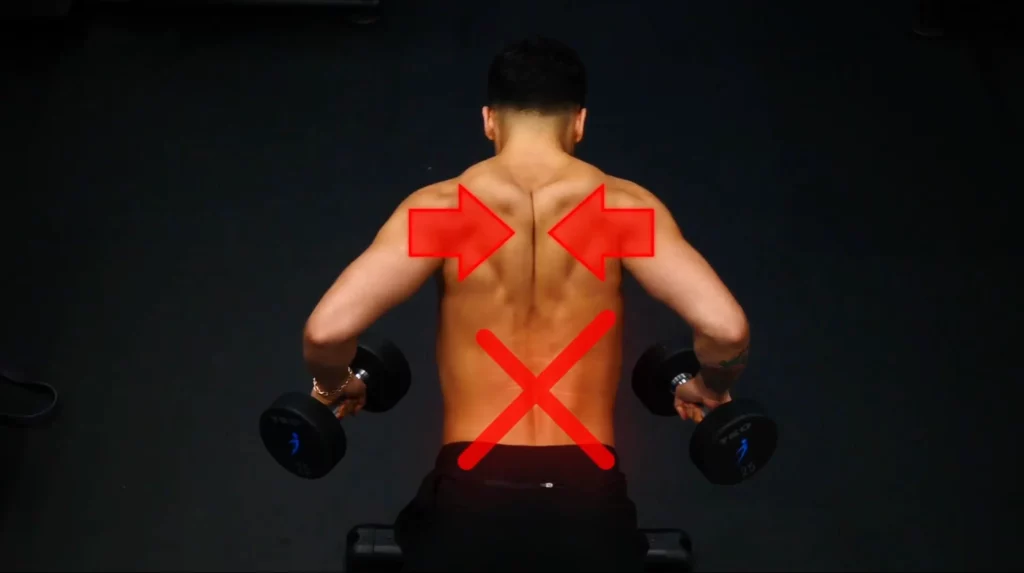
Push your arms forward to open up your shoulder blades, and keep them that way as you pull your elbows back.
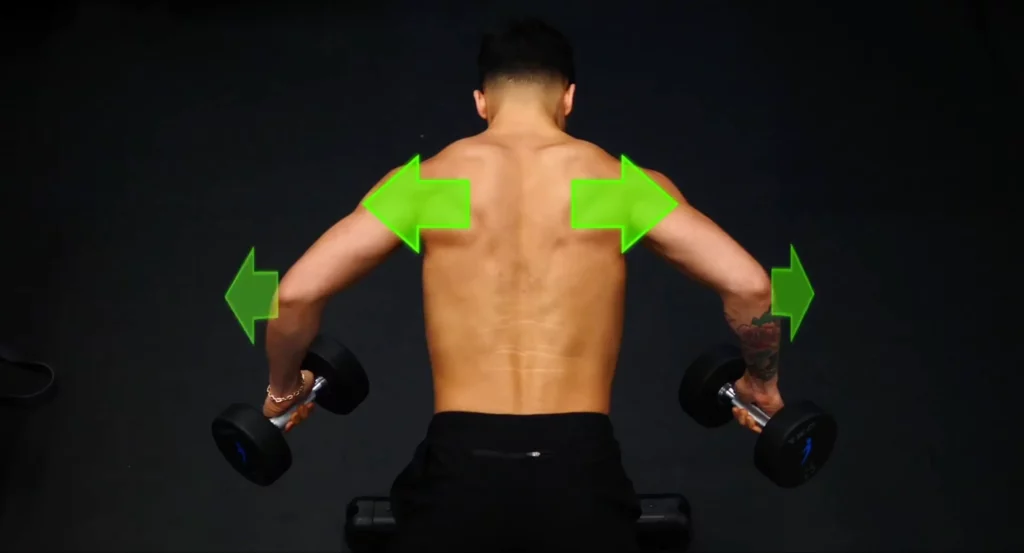
Now I’ll share the full delts workout, complete with sets and reps for each exercise at the end of the article, but for now, let’s move on to the last exercise in our delts workout.
Exercise #3: Seated Dumbbell Shoulder Press
Lastly, we'll tackle the front delts in our delts workout.

This is usually the most developed part of people’s shoulders because it’s already worked indirectly in many other exercises.
In fact, in studies, researchers would count 1 set of bench presses as 1 set for the chest but also 1 set for the front delts.
But it’s still a good idea to do at least 1 exercise to work this area in your delts workout, especially since the exercise I’ll show you can help indirectly grow the other parts of your shoulders as well.
Now, unfortunately, there are no studies that have compared how well different exercises grow the front delts.
But remember how we said muscles are best grown if the arm path of the exercise matches the direction of the muscle’s fibers?
Well, for the front delts, the arm path matches quite well with overhead shoulder presses.
Now in the past, I’d always do standing barbell overhead presses.
But they just really started beating up my joints, and it was always a struggle to stay balanced.
So I switched this out for a more stable and smoother exercise on the joints, the seated dumbbell shoulder press.
But not the way most people do it.
Setting Up For Maximum Comfort And Growth
Let me explain.
Bring your arm up directly to your side with your elbow at a 90-degree angle. Then without arching your back, rotate your hand back as far as you can.
How far could you go?
A 2020 study with over 2400 participants found that, on average, they could only get to about 60 degrees.
But take a look at the dumbbell shoulder press.
With the bench straight up, you need to be able to comfortably get to 90 degrees.
Otherwise, you’ll end up pressing the weight a bit forward and using other muscles or may end up aggravating your shoulder.
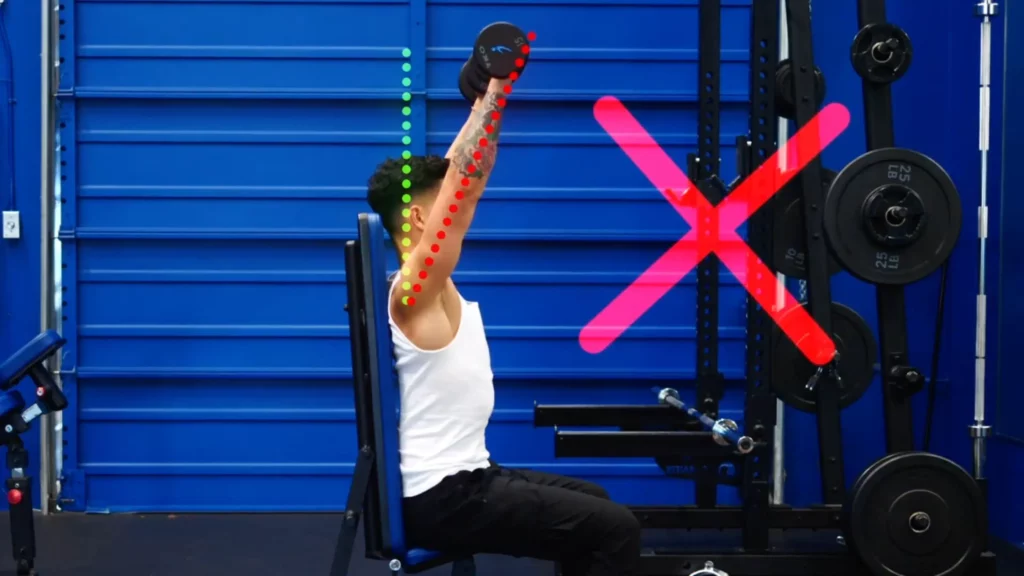
So try to bring the bench back about 1-2 notches, and as you can see, it’ll require far less shoulder mobility.
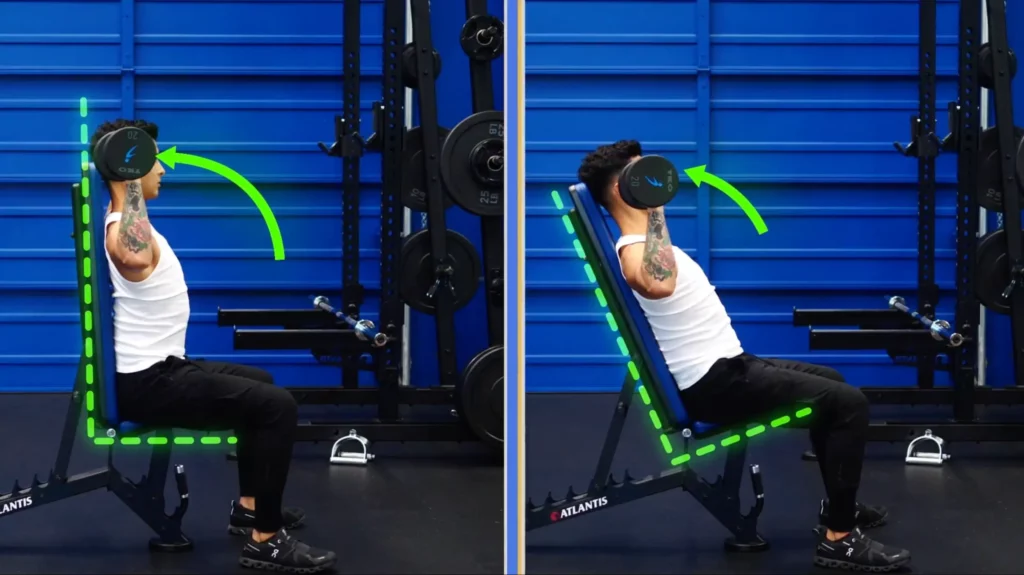
Once you’re set-up, line up your arm with the front delt fibers by driving your elbows inwards slightly with your palms facing in.
Then, press the weight over your shoulders and return back to this starting position after each rep.
TL;DR
- The 3 exercises in the delts workout are 1) behind-the-body cable lateral raises, 2) 45-degree reverse cable flies, and 3) seated dumbbell shoulder presses.
- Behind-the-body cable lateral raises help challenge the side delts more at the beginning when they’re stretched. Set the cable 2-3 notches from the bottom.
- 45-degree reverse cable flies help line your arm angle with the rear delts’ muscle fibers — promoting optimal growth.
- Seated dumbbell shoulder presses are more stable and joint-friendly than its standing variant. Bring the bench back 1-2 notches for a more comfortable set-up.
The #1 Delts Workout That'll Blow Up Your Shoulders
So here are the 3 exercises with the reps, sets, alternatives, and how often to perform them.

Implementing The Delts Workout Into Your Routine
You could do this as a workout on its own, but I’d recommend splitting these exercises up into 2-3 of your workouts throughout the week.
Now that said, research is always evolving.
I may end up being wrong about all of this in a few years' time, but I will do my best to keep you guys updated with the latest science.
So far, though, the research is promising, and it seems like it’s working.
If you want a step-by-step plan that takes care of all the science and guesswork for you so you can build muscle and lose fat as efficiently as possible, just take our quiz below to find the best plan for you:
Click the button below to take my analysis quiz to discover the best program for you:
↓
Highly recommend giving this article a read next, which dives into all the exercises that are known to provide better muscle growth because of the stretch research we talked about earlier.
Thanks for sticking to the end, and I’ll see ya next time!



